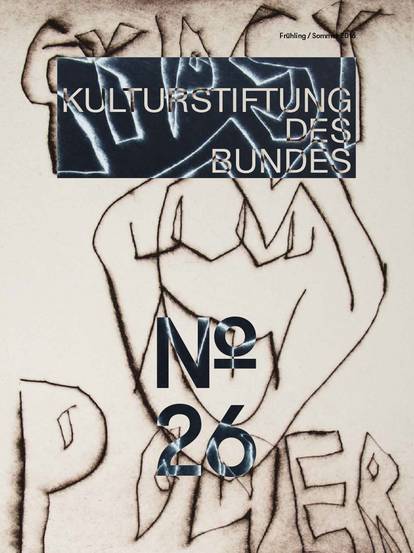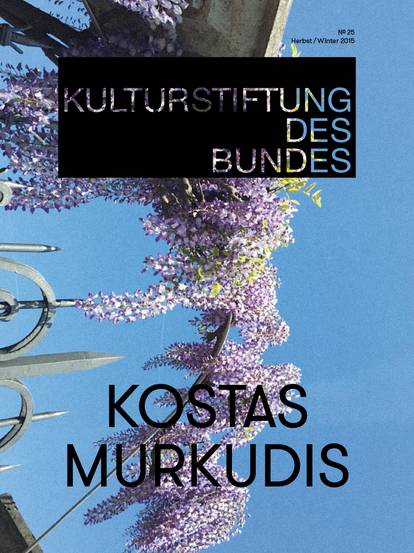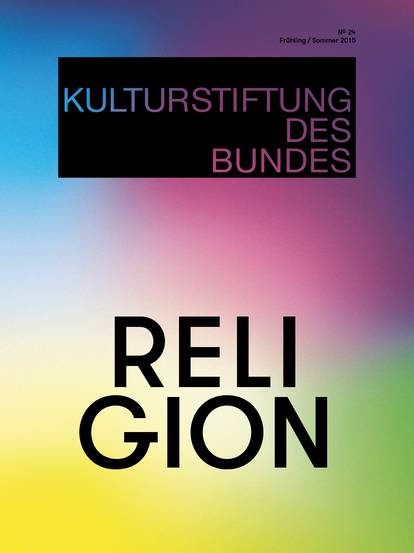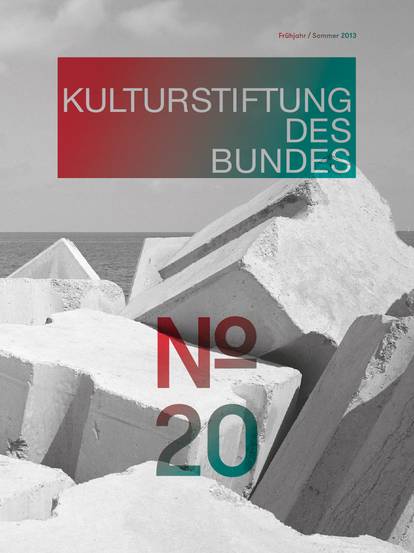There are places which possess a spirit, a genius, which keeps glowing over time and makes itself known throughout history. A spirit, which, like Proteus, is similar to a Greek deity, occasionally presenting itself to mortals in one form or another, but whose entity is essentially unchanging. There is a place in Budapest, or more specifically in Zugliget on the opposite side of the river in Buda, far away from Pest, which still possesses such a radiant spirit. Its radius is limited to a relatively small topography. It is tangibly connected to its physical surroundings and is indeed part of it. I only realised this a few years ago when my daughter, a second-grader at the time, began attending the Lauder School,[1] a private school on Budakeszi Street. It consists of several buildings and premises, atmospherically situated in a relatively spacious, scenic area at the forest’s edge. It takes about 20 to 25 minutes to reach the school by car or public transport from where we live on the Pest side of Budapest. Before the war, when well-to-do citizens of Pest used to come here for relaxation, it used to take much longer. Perhaps it was the healthy distance from the commotion of the big city which lent itself to the region’s appeal. Another reason was certainly the beautiful, wooded surroundings where the rich citizens of Pest chose to build their villas and summer residences, a somewhat more modest Budapest version of Berlin’s Grunewald district. The school’s main building was newly constructed when it relocated to Buda from Pest, but the kindergarten is housed in a small, historic villa, and there are several well-preserved pre-war villas on properties near the school.
One day, I was on my way to an event at the school when I happened to pass a stairway leading to a small street not far from the school. At the bottom of the stairs (near 32, Budakeszi Street), I discovered a small plaque. Coming closer, I read:
GÁBOR SZTEHLO
Protestant minister
1909–1974
During World War II he saved the lives of hundreds of orphaned children and persecuted adults.
He was granted the honorary title “Righteous Among the Nations” for his achievement.
The former villa at 48, Budakeszi Street was one of the orphanages he founded.
The narrow, staired alleyway, which had once been called Árnyas Alley, or the “Shadowy Alley”, now carries his name.[2] For a moment I was rooted to the spot because Budakeszi Street 48 was the address of the Lauder School, where my daughter was attending, and where, I suddenly realised, her grandfather, Ottó Orbán[3] – one of Hungary’s most influential poets and coincidentally my life partner’s father – survived the war as a child thanks to Gábor Sztehlo. This I knew because I had heard it told several times by him and the family, in addition to hearing him speak about it in multiple interviews.[4] I stood there awestruck until I realised that I hadn’t seen any signs or mention of it at the school. I walked back up Budakeszi Street, and a bit further behind the school (where I hadn’t ventured yet), there was, in fact, a gate with a sign reading: Gábor Sztehlo Orphanage.[5] I opened the gate, and at the end of the driveway, I came to a villa which was in relatively good condition. Next to it, I found a marble plaque inscribed with the words:
Between 1945 and 1949
this house and this garden,
the so-called “WOLF’S DEN”,
were the centre of GAUDIOPOLIS,
for the children rescued by GÁBOR SZTEHLO
and whose children’s republic he founded and led.
Donated by the Gábor Sztehlo Foundation
On the 50th anniversary of the Holocaust,
1994.
Obviously the plaque had been erected much earlier, in the years of the Third Republic, five years after the fall of the Iron Curtain. The institute must have adopted Sztehlo’s name much later. The plaque was hardly visible – at least from the street – so no one could know it existed aside from the residents and staff of the orphanage or some chance visitor who had lost her way. You wouldn’t miss it if you didn’t know it was there. Enthralled by my discovery, I was suddenly overcome by a sort of calm as if a family history had regained continuity, that of Gaudiopolis, the children’s republic and that unique spirit which had ensured a grandfather’s survival after the Holocaust, leading to the progressive secular Jewish school, which now ensures the intellectual and emotional survival of his granddaughter, topographically visible and tangible as if now finally marked on a map. The pieces of a mosaic unexpectedly fell into place (a mutual place), were realigned, and it filled me with satisfaction, if not serenity. Panta rhei. Yes, there are always new waters flowing, but the river, the river of history, is the same.
The Protestant minister Gábor Sztehlo saved several hundred orphaned or half-orphaned children during the Second World War. On behalf of Bishop Sándor Raffay, he engaged on a mission to save Jewish children in March 1944, the beginning of the German occupation. At first he brought these endangered children to his uncle’s villa in Bérc Street, and later, with the help of the Swiss Red Cross, to another 32 orphanages. By the end of the war, he had saved some 1,600 children in this way, for which he was granted the honorary title “Righteous Among the Nations” in 1972. This title could never have been more fitting or perfectly appropriate than for this man. When the war ended in spring 1945, a member of Manfred Weiss’s family[6] allowed Sztehlo to use their family villa in Zugló to house the surviving orphans. Thus the Pax Orphanage began operating. In September 1945, five months before the formal proclamation of the Hungarian Republic, 800 rescued children under Gábor Sztehlo’s supervision established Gaudiopolis, the “City of Joy”, a children’s republic. Gaudiopolis had its own constitution and legal code, drafted by the children themselves. They had their own government, currency (the Gapo dollar), newspaper,[7] and even their own comics. The children organised cultural programmes and started a library. They could learn a handicraft or volunteer to do community service, with each child only assigned tasks suited to their age. Gaudiopolis received no financial support from the church or the Hungarian government, but relied solely on the generous aid of the International Red Cross.
The “Wolf’s Den” mentioned on the plaque was the building where the older children were housed. The smaller ones lived in the adjacent building, known as the “Swallow’s Nest”. The institution only accepted boys at first, but later also girls, and the number of children eventually mushroomed to almost 8,000. These not only included orphans, but also half-orphans whose single parents didn’t have enough money to keep them fed – like the grandfather of my daughter, Ottó Orbán, who later became a poet and whose works also bear the deep, lasting wounds he suffered during the war. After some time, Sztehlo and his colleagues not only took in orphans who were brought to them, but actively went out and collected them off the streets.[8] In 1946 under the supervision of Zoltán Rákosi, the institute opened a kind of school which reintegrated these severely traumatised children into society very gradually, one step at a time, and with great care and sensitivity. Zoltán Rákosi developed what was an extraordinary method of art education at the time, which combined creativity with learning and democratic principles. Sztehlo saved many individuals who would later become quite well-known, such as the two sons of the famous magazine editor Sárközi Márta, who herself was the daughter of Ferenc Molnár, or the television director and university professor Ádám Horváth (the first minister of culture of Gaudiopolis) or the writer, critic and translator Mátyás Sárközi who later took up residence in London in 1956, and György Oláh, the future Nobel Prize winner in Chemistry, whom Sztehlo had taken in earlier during the war. Sztehlo had the capacity to approach everyone with the same degree of love, openness and acceptance. In his interview about his life’s work, Ottó Orbán mused: “What I’ve seen is that those who were together with me, those with whom I’ve stayed in contact one way or the other over the course of almost forty years now, or those I’ve seen again from time to time, they all agree that meeting him changed their lives, and what they got from him, though no one can describe what exactly it was.”[9] That ‘something’ was probably the readiness to accept and welcome people wherever they came from, and that sense of belongingness and solidarity which we all need as much today as back then. The children who were saved and raised by Gábor Sztehlo and who continue to regard each another as family established a foundation in 1990 which bears Sztehlo’s name and is dedicated to keeping his memory alive.[10] Thanks to their efforts, this extraordinary individual and his achievements are widely acknowledged even at the state level.
In 1950, Hungary’s communist dictator Mátyás Rákosi nationalised and disbanded the children’s republic. Such a liberal-minded institution that inspired youngsters to think freely and act independently obviously fell into the “forbidden” category during that era.[11] Following its closure, Sztehlo raced back and forth through Hungary on his motorcycle with sidecar like a furious angel, helping the internees and organising the nursing homes for the Protestant church where the elderly and handicapped children received care. During the 1956 revolution, Sztehlo’s family moved to Switzerland, but he insisted on staying and continuing his work in the nursing homes. In 1961, he visited Switzerland at the invitation of the Protestant church, but while he was there he suffered a heart attack. On his doctor’s advice, he decided not to travel home, but take up residence in Interlaken and continue his pastoral work from there. After his passport expired, he was no longer allowed to return to Hungary, which had been his greatest wish to the very last. Once he became a Swiss citizen, he would have been permitted to travel to Hungary again. Two months before the ten-year waiting period was over, he finally received his application forms in the mail so that he could apply for Swiss citizenship. He never opened it. He died in Interlaken, sitting on a park bench while trying to open the envelope.
It was only in a casket that Gábor Sztehlo was finally able to return home, where he now rests in the Farkasrét Cemetery in Budapest. Since then, schools and kindergartens have been named after him, and at one of the busiest places in the city, in front of the Protestant church at Deák Plaza, there is a statue of him.[12] The ideal of Gaudiopolis, the ideal of a republic built upon the principles of democracy, solidarity and love, awakened in 1989 and flourished in Hungary for several years afterwards, only to gradually fall back to sleep. Today it is clear that the ideal of Gaudiopolis in Hungary was only a utopia, a brilliant, but short-lived shooting star. The efforts of the Third Republic have been undermined, its achievements destroyed, its ideals razed to the ground. Today, the cold hunger for power and property rules the land. But the idea and memory of Gaudiopolis live on, and people like Gábor Sztehlo will continue to be born, albeit seldom. For as long as the situation remains as it is, we can do nothing more than remind ourselves that we once possessed such a thing; once upon a time there was a city of joy, a children’s republic, and at the beginning of the 1990s, we Hungarians had a republic which was originally built on the ideals of Gaudiopolis and which we could have truly made something of. And now we find ourselves here. Panta rhei.[13]
[1] The Ronald S. Lauder Foundation supports Jewish schools around the world, including chapters in Berlin and other European capitals. The Budapest chapter was founded in 1990 after the fall of the Iron Curtain. An important feature of the school is its free-thinking, creative and child-oriented instruction, which offers an especially attractive alternative to the strongly centralised, ideological teaching model reminiscent of socialist times now propagated by the Orbán government (albeit promoting a different ideology). At state schools, the children are forced to work with centrally designated and approved teaching material and obligatory textbooks. Parents who can send their child to an alternative school usually do so. But there are still too few of these alternative, independent schools which use their own source materials compared with the many that rely on the state-endorsed system, which promotes subservience instead of producing responsible and independent-thinking citizens.
[2] The plaque was erected in 2008 when the street was renamed.
[3] Ottó Orbán was born in Budapest as Ottó Szauer in 1936 and died in the arms of his wife Júlia Szabó in Szigliget 66 years later in 2002. He passed away in the same house where he had met her forty years earlier and spent his life with her – a genius loci if there ever was one. They had two daughters, Kati and Eszter. Kati Orbán has been my life partner for 25 years and we are raising our daughter Hanna together. I could be writing about them as my wife, mother-in-law and father-in-law if Hungary ever changed its marriage laws to allow same-sex partners. But they haven’t, and so I have no choice but use other linguistic forms to refer to them.
[4] In an extended interview about his life’s work, conducted by Lóránt Kabdebó between 1987 and 1988, he spoke at length on the topic. The interview appeared in book form, entitled Színpompás ostrom lángoló házakkal (Colourful Siege with Burning Houses), published by Magvető Publishing, Budapest in 2016 in the series Tények és Tanúk (Facts and Witnesses).
[5] During the war, the institute operated under the names “Pax Orphanage Zugliget” and the “Orphanage of the Good Shepherd of the Protestant Church”. After the war, it was called the “Pál-Vasvári Orphanage”, until 2009 when it was renamed after Sztehlo on the occasion of his 100th anniversary.
[6] Baron Manfred Weiss von Csepel (1857–1922), industrial magnate of Jewish descent, founder of the Manfred Weiss Steel- and Metalworks.
[7] In fact, there were two newspapers in Gaudiopolis: A Mi Újságunk (Our Newspaper) and Magunk (Ourselves). Ottó Orbán (still Szauer at the time) was the editor-in-chief of A Mi Újságunk.
[8] This inspired the film director Géza Radványi to make one of Hungary’s most famous movies, Somewhere in Europe, whose main character is based on Sztehlo.
[9] Színpompás ostrom lángoló házakkal, 60.
[10] sztehloalapitvany.hu
[11] During the communist regime, there were three categories, called the Three Ts: támogatott, türt, tiltott, meaning „supported, tolerated, forbidden“.
[12] A work by Tamás Vígh. Erected in 2009 on the occasion of Sztehlo’s 100th anniversary.
[13] In protest of the shameful poster campaign by the Orbán government against György Soros, I wish to take this occasion to express my gratitude to György Soros for trying to make Hungary a democratic, European state, a kind of Gaudiopolis. The fact that this is not yet the case, and that we are not even demanding what had once seemed within our grasp is not only a disgrace for our current power-abusing regime, but for us all.

![[Translate to English:] Magazine 38](/fileadmin/_processed_/f/1/csm_Magazin38_Cover-Vorschau_921x1230_689f428dc3.jpg)
![[Translate to English:] Magazine 37](/fileadmin/_processed_/b/c/csm_Mag37_Cover-Vorschau_921x1230_b5129fdb2a.jpg)
![[Translate to English:] Magazine 36](/fileadmin/_processed_/2/a/csm_Cover_Magazin36__issuu_2f3cef97bb.jpg)





![[Translate to English:] Magazine 30](/fileadmin/_processed_/c/b/csm_magazin30_vorschau_9005f773d3.jpg)














